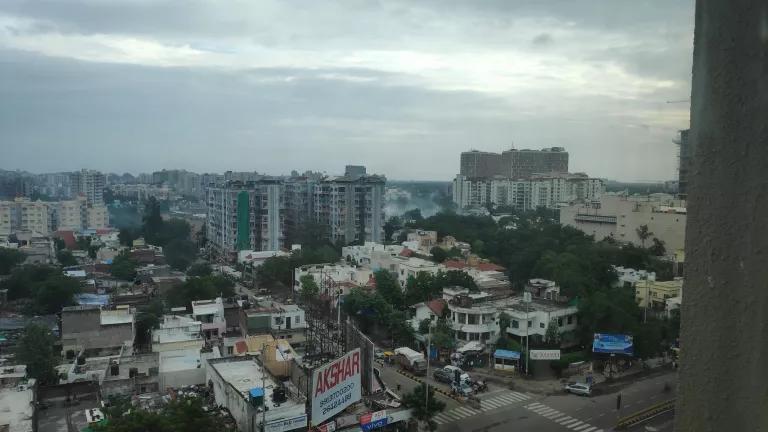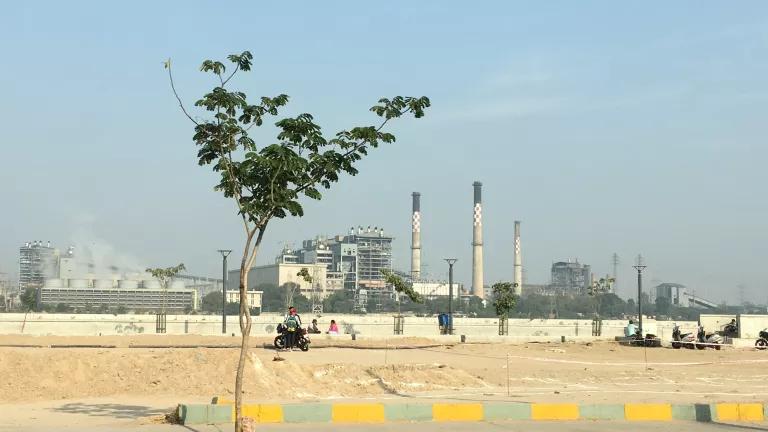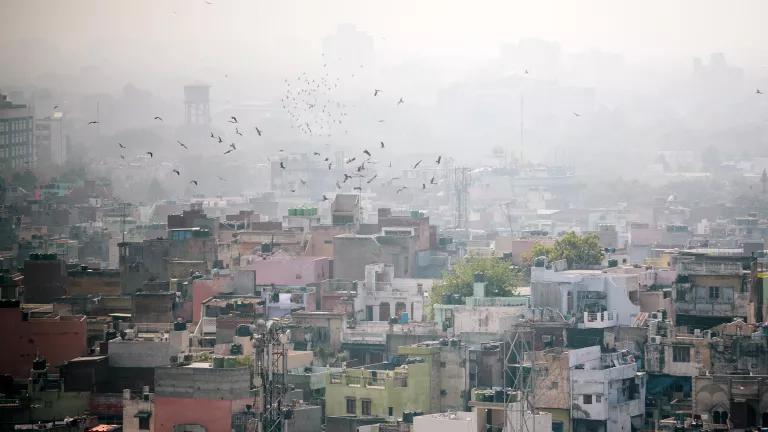Sustaining Progress Towards Clean Air In India
Stronger action is needed to meet India's clean air goals.

On the fourth anniversary of India's National Clean Air Programme, strong actions are needed to protect public health.
As seasonal air pollution spikes across India, including the megacities of Delhi and Mumbai, the ambitious aims of India’s National Clean Air Plan (NCAP), launched four years ago, stand in stark contrast to the dangerous conditions on the ground. The NCAP aims to significantly reduce air pollution levels across the country’s roster of cities that currently exceed India’s National Ambient Air Quality Standards (NAAQS)—benchmarks set to protect public health with an adequate margin of safety. Specifically, India’s Ministry of Environment, Forests, and Climate Change set the national NCAP goal as a 20-30% reduction in annual levels of dangerous fine particulate matter (PM2.5) air pollution by 2024, compared to a 2017 baseline. Achievement of that goal would represent considerable progress towards reducing air pollution in compliance with the NAAQS.
Because the root causes of India’s continuing air pollution problems are so complex, NCAP strategies aim to be comprehensive. The plan helps to facilitate funding, technology, and attention to improved air pollution management at the state and city level, and supports a range of actions aimed at implementation and scaling of clean air solutions. Importantly, improving public awareness of the health risks of air pollution is among the NCAP strategies aimed at strengthening the case for accelerated implementation of clean air solutions.

India’s National Clean Air Programme (NCAP), launched in 2019, aims to improve air quality through integration of actions spanning science, technology, policy, and education at the city, state, and regional level.
As part of NCAP, each of 132 non-attainment cities (those with PM2.5 levels currently exceeding the NAAQS) prepared detailed clean air action plans mapping out municipal efforts to better monitor, understand, and address local air pollution challenges. These local plans also identify near-term interventions to reduce pollution from a range of sources—including construction dust, industrial operations, and the transportation sector—and timelines for implementation of priority source control actions.
Assessing Progress
In 2023, four years into NCAP implementation, progress to date is uneven and not on pace to achieve success by 2024. A new analysis of NCAP progress since 2019 by Carbon Copy indicates that, while many of India’s most polluted cities in 2019 have made some progress in reducing PM2.5 air pollution, annual levels in 2022 still far exceeded the national standard (40 m µg/m3).
In terms of improving air quality data collection, NCAP funds have helped to expand air monitoring stations considerably since 2019, with 180 additional stations now in place. Still, more action is needed to expand air monitoring by another 600-plus stations to reach the national target of 1,500 stations by 2024. In order to achieve NCAP goals within this decade and better protect the Indian public from dangerous levels of air pollution, more work is needed to strengthen and scale up clean air solutions countrywide.
Integrating Health Aims Into Clean Air Planning
Scientific assessments of air quality indicate that cleaner air in line with NCAP goals could deliver huge public health benefits. But the health argument for clean air action is weakened because of limited considerations of air pollution's health harms in city clean air plans. More broadly, leading health stakeholders have not been called upon to help implement the plan itself: while NCAP efforts are currently coordinated among seven government ministries, the Ministry of Health and Family Welfare is not included in implementation of the plan.
Despite robust estimates from regional health impact assessments of air pollution in India, there is limited evidence quantifying air pollution’s health harms at a local level, using city-specific population, health, and air pollution data. However, new work led by NRDC with a team of local experts demonstrates that city-level attainment of NCAP goals could achieve substantial local, near-term health benefits.
New Evidence: Health Benefits Of Attaining Clean Air Goals
Working with a well-established modeling tool (known as BenMAP-CE) for estimating air pollution's health effects, our team examined conditions in the city of Ahmedabad, in the western Indian state of Gujarat, which is a current NCAP non-attainment city. Ahmedabad’s city leadership has prioritized health protective actions for extreme heat and air pollution for more than a decade, and in 2017 the city launched an innovative Air Information and Response (AIR) Plan that capitalized on newly-installed air pollution monitors to better inform the public about health risks from poor air quality.
Our applied research effort, a three-year collaboration among scientists from the Indian Institute of Public Health-Gandhinagar, the Gujarat Energy Research and Management Institute, the Indian Institute of Tropical Meteorology, and NRDC, deployed local expertise to estimate the health burden of both present-day and potential future air pollution levels in the city. We also estimated the health improvements achievable by 2030 if Ahmedabad were to meet NCAP goals, or two even more ambitious benchmarks (NAAQS standards and the World Health Organization’s Air Quality Guidelines for PM2.5).
Our investigation, recently published in the peer-reviewed journal Environmental Research: Health, found that achievement of NCAP goals in Ahmedabad would result in substantial public health benefits, with more than 6,500 avoided deaths by 2030 compared to a business-as-usual (BAU) air pollution trajectory. If the city were to further improve air quality to achieve the NAAQS targets, we estimate 9,047 avoided deaths in 2030 relative to BAU. Attainment of the World Health Organization’s air quality guideline level for PM2.5 would result in 17,369 avoided citywide deaths in 2030 relative to BAU, according to our analysis. Actions to reduce air pollution by 2030 through a combination of mitigation and adaptation actions would result in about 1,400 fewer annual deaths in Ahmedabad, according to our analysis.

Research findings indicate that lowering air pollution levels (blue bars) results in major health benefits (orange line). Left axis values apply to blue bars; right axis values apply to orange line.
Our air quality and health modelling approach provides a blueprint for future studies to estimate local air quality and health co-benefits of climate change responses in India. Such research can help the public understand the health benefits of cleaner air, and it can also strengthen our understanding of the health implications of a wide array of policies in India that affect energy use and air quality: these include the India Cooling Action Plan, India’s climate change goals under the United Nations Framework Convention on Climate Change, and further implementation of NCAP.
The Path Ahead
Air quality remains a major public health threat across India and last fall, India’s Ministry of Environment, Forests, and Climate Change raised the ambition for NCAP to achieve even greater reductions in fine particulate matter levels, now aiming for a 40% PM2.5 reduction by 2026, relative to the 2017 baseline. To achieve this goal, strong and concerted action is needed to implement clean air strategies across the country. Our new research provides tangible evidence for substantial human health benefits from air quality improvements, which can help to motivate local action. Ultimately, sustained progress to improve air quality via NCAP is about protecting public health and securing a safer and more prosperous future for India’s populace.
This work was supported by the Wellcome Trust [Grant #216093/Z/19/Z].




